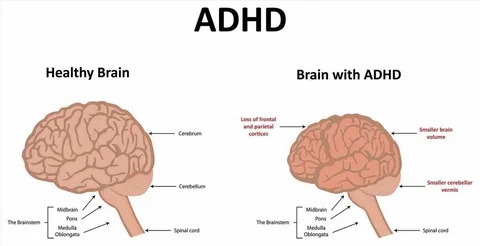The neurodevelopmental disorder known as Attention Deficit Hyperactivity Disorder (ADHD) is typified by impulsive behavior, hyperactivity, and inattention. Since impulsivity and hyperactivity can have a major negative influence on everyday functioning and quality of life, managing these symptoms is an important part of treating ADHD. In this post, we'll look at methods and treatments for controlling impulsivity and hyperactivity in people with ADHD.
1. Overview of ADHD Impulsivity and Hyperactivity
A hallmark of ADHD are impulsivity and hyperactivity, which can take many different forms. Impulsivity is the inability to consider things through before acting, making snap decisions, and finding it difficult to control one's impulses. Excessive motor activity, restlessness, and trouble sitting still or staying motionless for long periods of time are all considered signs of hyperactivity.
These symptoms can cause problems in a variety of contexts, such as social situations, the workplace, and educational institutions. Nonetheless, people with ADHD can learn to control their impulsivity and hyperactivity and enhance their general functioning with the right care.
2. Techniques Behavioral
Behavioral techniques are essential for controlling impulsivity and hyperactivity in people with ADHD. These tactics concentrate on imparting to people the skills necessary to properly observe and control their behavior. Among the behavioral techniques that work well for controlling impulsivity and hyperactivity are:
a. Cognitive behavioral therapy
Cognitive behavioral therapy, or CBT, assists people in recognizing impulsive and negative thought patterns and creating plans to confront and change them. Approaches including cognitive restructuring, mindfulness, and problem-solving skills instruction can assist people with ADHD in learning to control their impulses and take a moment to reflect before acting.
b. Self-Monitoring and Self-Regulation:
It can be empowering to teach people with ADHD how to keep an eye on their own behavior and use self-regulation strategies. This may entail tracking impulsive actions and identifying triggers with the use of tools like behavior charts, self-monitoring journals, or smartphone apps. Then, people can learn tactics to control their impulses, such counting to ten, taking deep breaths, or employing visualization exercises.
c. Time-Out and Breaks:
Giving people with ADHD the chance to take breaks and time-outs can help them better control their energy and lessen hyperactivity. Short breaks for physical activity or relaxation techniques can assist release stored energy and enhance concentration.
d. Environmental Modifications:
Improving tranquility and minimizing distractions can help control impulsivity and hyperactivity. This can entail setting up a calm, orderly workstation free from distracting sights and sounds, utilizing noise-canceling headphones, or stocking chewable necklaces and stress balls as fidget items.
3. Administration of Medication
Another crucial part of treating ADHD is medication, which helps control impulsivity and hyperactivity. By raising the amounts of neurotransmitters in the brain, stimulant drugs like methylphenidate (Ritalin, Concerta) and amphetamines (Adderall, Vyvanse) are frequently used to assist lessen impulsive behavior and hyperactivity.
People who don't react well to stimulants or whose conditions prevent them from being used can also be treated for impulsivity and hyperactivity using non-stimulant drugs such atomoxetine (Strattera).
Since everyone's response to medication varies, it is critical to collaborate closely with a healthcare professional to determine the appropriate drug and dosage for each individual. For best symptom control, medication adjustments and routine monitoring may be required.
4. Training for Teachers and Parents
Managing impulsivity and hyperactivity in kids and teenagers requires educating parents, educators, and other caregivers about ADHD and practical treatment approaches. In order to assist their child's behavior at home, parents can learn behavioral management tactics, communication strategies, and problem-solving skills from parent training programs.
In a similar vein, teacher preparation programs give instructors the know-how to modify lessons to fit the needs of ADHD students, establish positive learning environments, and enforce behavior control tactics. Working together, parents and educators may ensure that tactics are applied consistently and are reinforced in many contexts.
5. Exercise and Physical Activity
By releasing extra energy and enhancing mood and concentration, regular exercise and physical activity can help people with ADHD manage impulsivity and hyperactivity. Participating in sports, dance, yoga, martial arts, or other activities can help release stored energy and encourage self-control.
People with ADHD can maintain attention and composure by including movement breaks throughout the day and encouraging frequent physical activity. Additionally, it has been demonstrated that exercise enhances executive performance and cognitive function, both of which are frequently compromised in people with ADHD.
6. Concluding remarks
One of the main goals of treating ADHD is controlling impulsivity and hyperactivity, which calls for a multifaceted strategy. Individuals with ADHD can benefit greatly from behavioral techniques, medication management, parent and teacher education, physical activity, and environmental changes in addition to behavioral strategies.
People with ADHD can learn to effectively control their impulsivity and hyperactivity by putting these methods and interventions into practice. This will improve their academic, social, and personal outcomes. People with ADHD can flourish and realize their full potential with the correct assistance and ADHD therapy.


No comments yet